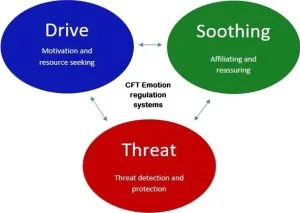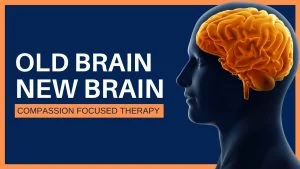Contents
- 1 What Is Compassion Focused Therapy (CFT)?
- 2 Issues Compassion-Focused Therapy Treats
- 3 How Does Compassion Focused Therapy Work?
- 4 Benefits Of Compassion Focused Therapy (CFT)
- 5 Applications of Compassion Focused Therapy
- 6 How Effective Is CFT?
- 7 Who Can Use CFT?
- 8 Limitations of Compassion Focused Therapy
- 9 Techniques Used In Compassion-Focused Therapy
- 10 Conclusion
- 11 A Word From Therapy Mantra
What Is Compassion Focused Therapy (CFT)?

Compassion-focused therapy is a new perspective on mental health that has been found to be effective with many clients. It helps people view their problems from a new perspective, and can help them feel more connected with others. The theory behind compassion-focused therapy is that through cultivating more compassion for themselves and others, one will also experience a greater sense of wellness.
Compassion-focused therapy (CFT) is a relatively new approach to mental health that has been found to be effective with many clients. The theory behind CFT is that through cultivating more compassion for themselves and others, one will also experience a greater sense of wellbeing.
Issues Compassion-Focused Therapy Treats
CFT is a relatively new approach to mental health that has been found to be effective with many clients. The theory behind CFT is that through cultivating more compassion for themselves and others, one will also experience a greater sense of wellbeing.
CFT has been shown to be beneficial in treating a variety of issues, including:

- Depression
- Anxiety
- Phobias
- Trauma
- Relationship problems
- Self-esteem issues
- Eating disorders
- Addictions
- Obsessive-compulsive disorder (OCD)
The theory behind CFT is that through cultivating more compassion for themselves and others, one will also experience a greater sense of wellbeing.
How Does Compassion Focused Therapy Work?

At its core, CFT focuses on developing self-compassion, or the ability to treat oneself kindly during difficult times. Therapists teach clients about what it means to be kind and accepting toward themselves when things don’t go well. The goal is for clients to develop their own sense of self-soothing techniques so they can use these skills at home without needing therapist support. This process helps people view their problems from a new perspective, and can help them feel more connected with others.
The goal of CFT is to help people view their problems from a new perspective and to help them feel more connected with others. This is done by teaching people specific techniques to increase their compassion for themselves and others. These techniques can include things like mindfulness meditation and visualization exercises.
Benefits Of Compassion Focused Therapy (CFT)

So far, research on CFT has shown that it can be helpful in treating a variety of mental health concerns, including depression, generalized anxiety disorder (GAD), post-traumatic stress disorder (PTSD), obsessive-compulsive disorder (OCD), and social anxiety. When used in conjunction with other treatment methods, CFT has also been found to help clients become less self-focused and experience fewer negative emotions. The benefits are-
- Increase self-compassion
- Improve mental health symptoms
- Decrease depression and anxiety
CFT has also been found to help people become more engaged in their lives and in activities they enjoy. It can also improve a person’s relationships with others by helping them be less critical of themselves and to be more aware of how other people may be feeling.
In addition, research has found that CFT increases positive emotions and feelings of self-worth, meaning there is less likelihood of experiencing depressive symptoms.
Along with this, many clients report feeling a greater sense of purpose after receiving therapy. In fact, following treatment for depression, one study found that those who had received CFT were more likely to have been working towards important personal goals compared to those who hadn’t received any treatment at all. This research showed a lasting effect from therapy which can contribute greatly to overall well-being.
Applications of Compassion Focused Therapy
The applications of CFT can include many different settings, including mental health facilities, companies, schools, prisons, the military, social service agencies, hospitals, and clinics. There are also several ways to deliver CFT with options for individual therapy, group therapy, or online. The therapist may use different techniques depending on the client’s needs and preferences. For example:
Guidance

Therapists will often start by guiding clients through exercises that help them become more connected with their emotions. They might ask questions like: What does compassion mean to you? How do you define it when you see it in others? What might be different if you were able to show more compassion to yourself and others?
Connecting The Situations
After this introduction, therapists will usually try to create connections between difficult situations the client has experienced and the emotions they felt during those times. For example: Imagine that your father got really angry with you today for forgetting to do something he asked you to do… What did you feel when this happened? Did other people see his anger or just you? How did that make you feel about yourself?
Teaching Self-Compassion
The therapist then tries to help clients understand how self-compassion could have helped them act differently during these difficult experiences (for instance, by showing kindness toward themselves instead of getting angry at their own mistakes). It’s important to note that this isn’t about letting yourself off the hook or ignoring your actions; it’s about caring for yourself in difficult situations.
Introducing Other Techniques

Next, therapists will often help clients practice various types of self-compassion exercises like diaphragmatic breathing (in which you focus on taking deep breaths using your diaphragm instead of shallow breaths using only the upper part of your chest) and mindful meditation (which is essentially just focused thinking without distractions). Clients may also be taught other mindfulness techniques that can help them pay more attention to what they’re doing at any given moment. For instance, if someone is eating dinner, they might take a moment to focus all their attention on how the food tastes before taking another bite. These exercises help clients become more aware of their emotions and practice understanding what they’re feeling vs. reacting to them, which is an important aspect of self-compassion.
appropriate when used with-
- Depression & anxiety
- People who are comfortable with emotional intimacy
- Low ability to regulate emotions
- Personality disorders (borderline personality disorder in particular)
How Effective Is CFT?

One meta-analysis, which looked at the results from 23 controlled trials on CFT for depression, showed that people who received treatment that included specific components of Compassion Focused Therapy experienced a greater reduction in depressive symptoms than those who did not. The analysis also noted that the effect size for this type of therapy was similar to other types of talk therapy.
Once a client has learned these techniques, he/she can use it. However, the therapist may suggest that he or she practice them at home as well as during sessions so they can continue using them after treatment ends. This is particularly true for mindfulness practices. This has been found to be effective even months after therapy has ended.”
Since its development in the 1990s by Paul Gilbert, a professor at the University of Derby in England. There have been over 50 studies on CFT. From these studies, the efficacy of CFT has been well established.
Who Can Use CFT?
Similarly, another study shows that business employees learn about self-compassion and how to apply it in their work environment. So they experienced a variety of benefits including increased job satisfaction and reduced turnover intentions. Beyond this, they also reported feeling more engaged and less stressed at work. Given these results, compassion-focused therapy may have the potential to help many groups of people who aren’t even receiving treatment for psychological difficulties.
There are many possible applications for compassion-focused therapy including helping individuals with mental health difficulties like anxiety and depression. However, there are also several areas in which you can apply it in everyday life, such as in education or business settings. One study found that fostering feelings of self-compassion in school teachers helped them to be more effective and less stressed. Additionally, students who received such training demonstrated improved academic performance.
Limitations of Compassion Focused Therapy
 Despite some evidence suggesting that CFT is helpful with certain types of mental health problems. There are still many limitations that need addressing. For instance,
Despite some evidence suggesting that CFT is helpful with certain types of mental health problems. There are still many limitations that need addressing. For instance,
- Some studies have found that CFT is not as effective in treating more severe forms of depression.
- There is a lack of research on how CFT works with other mental health conditions such as schizophrenia and bipolar disorder. So more studies are needed before it can be used to treat these types of problems.
These limitations highlight the importance of thoroughly evaluating the effectiveness of CFT. While also increasing awareness about where future research needs to focus.
As people continue to learn more about this type of therapy. Its ability to help those experiencing physical and psychological difficulties may expand even further. If you or someone you know would like support from a compassionate therapist, check out here.
Techniques Used In Compassion-Focused Therapy

One of the main goals of CFT is to help individuals develop a compassionate relationship with themselves. This involves learning how to be kind, understanding, and supportive towards oneself, even during difficult times. To achieve this, CFT therapists may use a variety of techniques including:
- Mindfulness meditation: This involves paying attention to the present moment in a non-judgmental way. It can help to increase awareness of emotions and thoughts, and can also promote feelings of calm and relaxation.
- Dialectical behavior therapy (DBT): This type of therapy focuses on helping people manage their emotions effectively. It can be helpful for those who have difficulty regulating their emotions or who have personality disorders.
- Cognitive restructuring: This involves looking at negative thoughts and beliefs in order to make them more realistic or helpful. A therapist may help individual identify their unhelpful thoughts, challenge these thoughts. And find alternative ways of thinking about the situation.
- Empathy exercises: These involve developing a deeper understanding of the difficulties that one experiences during difficult times, often by putting oneself in another’s shoes. In doing so, individuals can come to understand how others might feel. As well as develop a sense of forgiveness towards themselves for experiencing difficulty.
- Guided imagery: During this type of therapy, individuals imagine a supportive person who is unconditionally loving and kind towards them during times when they need encouragement or comfort. Doing so can promote feelings of safety and warmth while also fostering a sense of connectedness towards others.
Conclusion
Compassion-focused therapy is a new approach to psychotherapy that focuses on the therapeutic relationship and using mindfulness, compassion. If you’re struggling with low self-esteem or depression, this type of treatment could be helpful for you. In fact, research has shown it may help people feel better after just one session! The next time your mental health feels like it’s in a rut, give compassionate therapy a try. You have nothing to lose but some negative feelings about yourself. And potentially so much more if these feelings don’t change soon.
A Word From Therapy Mantra
Your mental health — Your psychological, emotional, and social well-being — has an impact on every aspect of your life. Positive mental health essentially allows you to effectively deal with life’s everyday challenges.
At TherapyMantra, we have a team of therapists who provide affordable online therapy to assist you with issues such as depression, anxiety, stress, workplace Issues, addiction, relationship, OCD, LGBTQ, and PTSD. You can book a free therapy or download our free Android or iOS app.


